Paul Nicklen: Using Photography for Conservation
![]()
Paul Nicklen is a photographer who uses his imagery to connect global audiences to the beauty and fragility of our ecosystems and the animals that depend on them.
Nicklen’s work delivers audiences to an underwater realm witnessed by few. His sensitive and evocative imagery has garnered over 30 of the highest awards for a photographer in his field, including the BBC Wildlife Photographer of the Year and the prestigious World Press Photo for Photojournalism.
A Bear Encounter at Three Feet
Back in 2010, Nicklen was doing a story on Spirit Bears for National Geographic, which became the cover story. Kermode bears are black bears, but a few have a recessive gene and end up looking whiteish. It looks like a polar bear walking through the giant old-growth cedar forests of British Columbia [Canadian province above Washington].
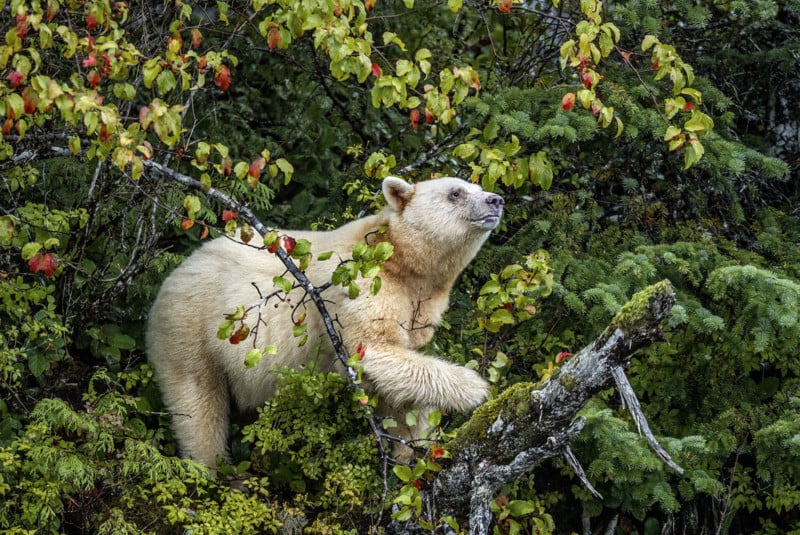
Nicklen had 80 days in his shooting schedule but only had a few good shooting days available as it rains almost every day here, hence the name Great Bear Rainforest.
After a whole month, he did not have any worthwhile images to show and was concerned about informing the magazine that he had failed on a project he proposed as “they publish pictures, not excuses.”
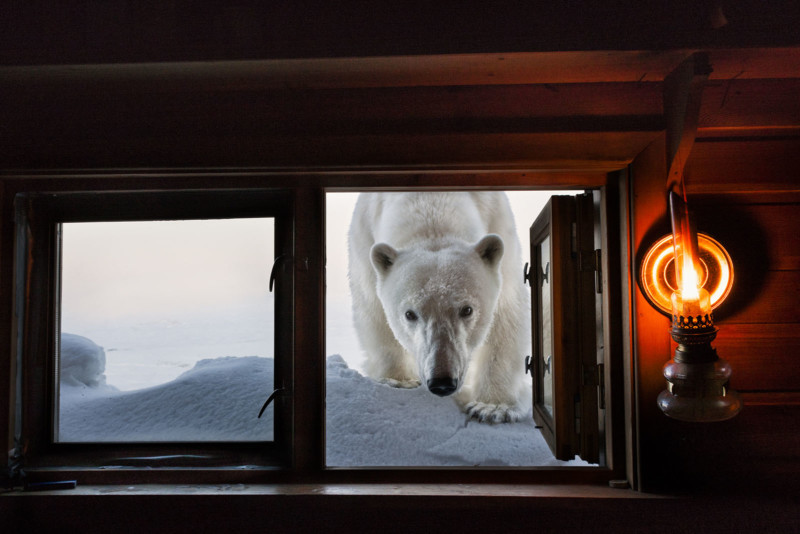
One day he followed a giant spirit bear into the forest and watched him eat a salmon he had freshly caught. Suddenly, the bear stands up and starts to make his way to the creek.
“I realized that there was only one little entrance into this cove,” Nicklen tells PetaPixel. “And I was blocking his exit, so I stepped to the side, and he walked back and went down to the river and got another fish. I’m three feet away from this bear, photographing him on a 16mm lens.”
The bear repeatedly went by him and even “bumped into the camera at one point.” He got most of the photographs for a three-month story almost in a day and a half.
Warning: Do NOT try this yourself in the wild if you come across a bear. This was a special instance of knowing what to do in an unexpected situation, and a First Nations guide who knew this bear well was just five feet behind Nicklen.
“Animals dictate the encounter,” Nicklen adds. “You never push the animal; you never force an animal to do anything. I was sitting there quietly, and the bear was walking up to me, and he was trying to walk by me going to the river, get a salmon, and he would sit there and eat right beside me, sometimes a foot or two away.
“I started with a 100-400mm, then a 24-70mm, and finally a 16-35mm, and before you know it, I’m zooming out to 16mm to photograph this bear in his environment, and that’s the ultimate. But that was after eight weeks of sitting there waiting, waiting, and waiting. The animal had probably been watching me, smelling me, hearing the clicks of my camera … it’s just not that surprised.
“Animals are very consistent in their behavior, and generally, they’re very trustworthy. I’ve seen perhaps 3,000 polar bears, 2,000 grizzly bears, and 1,000 black bears in my lifetime, and I’ve never had to shoot or pepper spray a bear.
“When I take people to Antarctica, and they ask what advice I have for them, my answer is often to ‘put down your camera and take it in with your mind and eyes, feed your soul for a while and then take pictures.’ Don’t just be a slave to the device in front of you.”
Favorite Animal
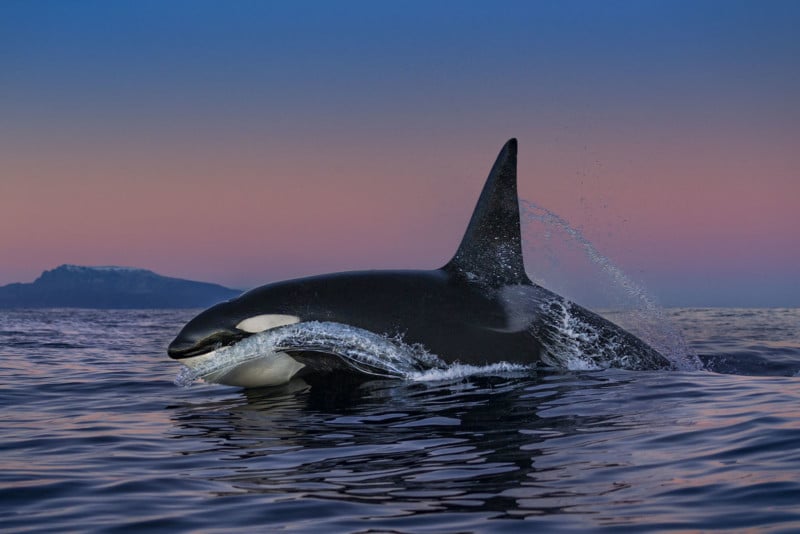
Nicklen does not have a single favorite animal that he prefers catching on camera.
“I photograph whichever one gives me the connection at that time to have the biggest voice for an environment that’s under threat,” says the wildlife photographer. “It can be polar bears and narwhals in the Arctic, leopard seals in Antarctica, or sperm whales off Dominica [not to be confused with the Dominican Republic]. If I can tell a story using their voice and their persona, then it’s my favorite animal.
“The polar bear is one animal I have spent the most time with. I’ve seen and photographed polar bears probably a thousand days, like three years of my life.”
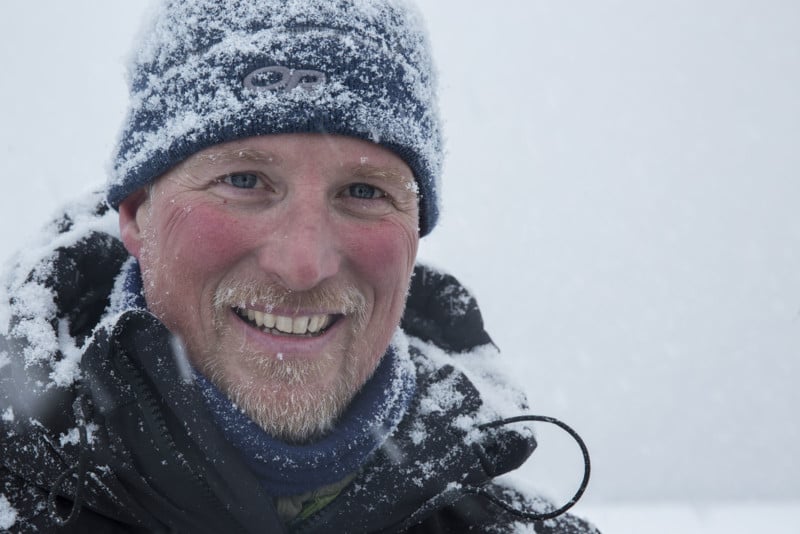
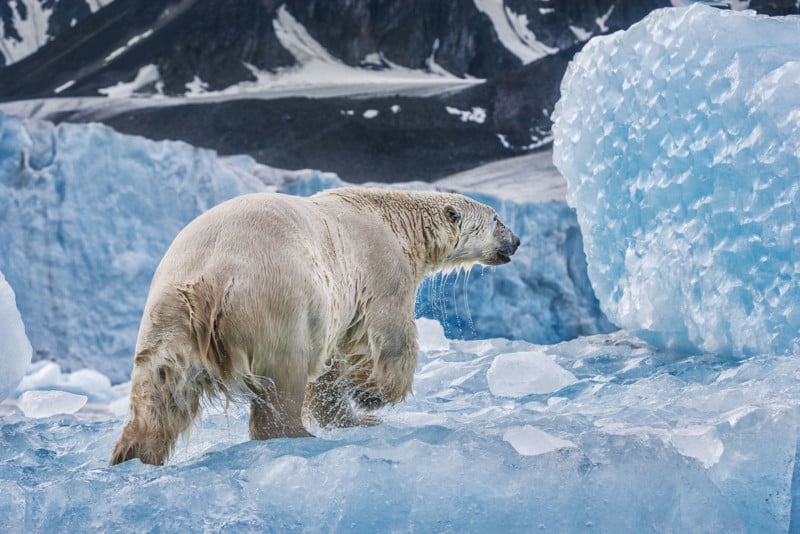
Scary Situations
Nicklen says he has had a number of scary encounters over his life and career, but only with humans and not with animals.
“I’ve crashed an airplane into an Arctic lake and was trapped upside down underwater. It was a very close call with a 99% fatality rate, so that was scary,” he remembers.
“Almost any scary encounter I’ve ever had is my fault — falling through sea ice, dislocating my shoulder, running out of air on dives, getting lost at sea dives but rarely have I had a scary encounter with a wild animal.”
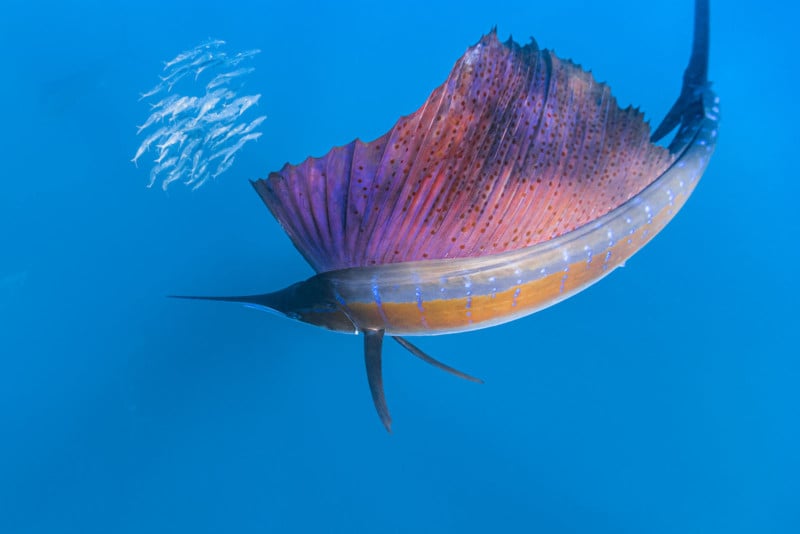
If he were to die, he would like to go in a cool way, immersed in nature, rather than through something like a car accident in the concrete jungle — he says he would prefer to go during a scuba dive instead.
Landscapes or Animal Photography
Nicklen loves to combine animals and landscapes rather than take a picture of a mountain, the aurora borealis, or a rainstorm.
“I want to put things into context and have layers of the environment,” says the former professional biologist. “I want to have the aurora, the mountains, and landscape, the polar bear walking across the sea ice, a grizzly or spirit bear in the forest, or a small pond of narwhals from an aerial shot.
“I like my work to be layered but have that animal to give the story and the landscape context rather than just straight landscapes.
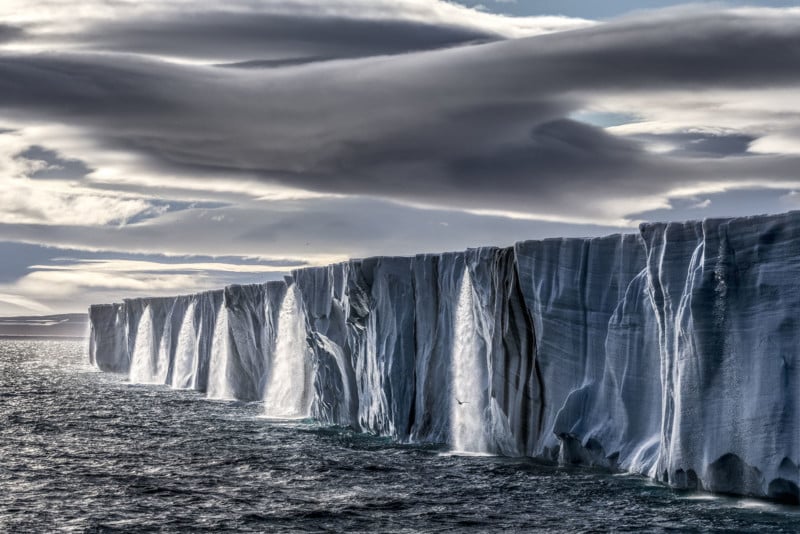
In 2014, Nicklen captured an important landscape, Ice Waterfall, in Svalbard, Norway. Arctic waterfalls sprout from the Nordaustlandet ice cap as it gushes high volumes of meltwater – a striking reminder of this icy ecosystem’s fragility. Even though this image was taken just 600 miles from the North Pole, the temperature hovered in the high 60s Fahrenheit. Thanks to climate change; the Arctic could be completely devoid of sea ice during the summer months within the next 10 to 20 years.
Former vice president and environmentalist Al Gore has used the Ice Waterfall photo in his talks and environmental projects many times.
“That’s why I shoot this stuff,” says the Canadian photographer from Vancouver Island. “What excites me the most is when I take a picture like Ice Waterfall, it looks powerful and beautiful. I’m proud when National Geographic makes it the gatefold opening spread of the climate change issue.
“Most people, when they take a good picture, it’s over for them. For me, it’s time for that image to go to work and to keep communicating with the world. I loved it when Pearl Jam put that picture on the cover of their Gigaton album.
“I did a TED talk in 2011 at the main stage in Long Beach, California, and Al Gore met me at the end of my talk and asked me to join him on his trips. He’s always just been a charming, passionate advocate for the planet.
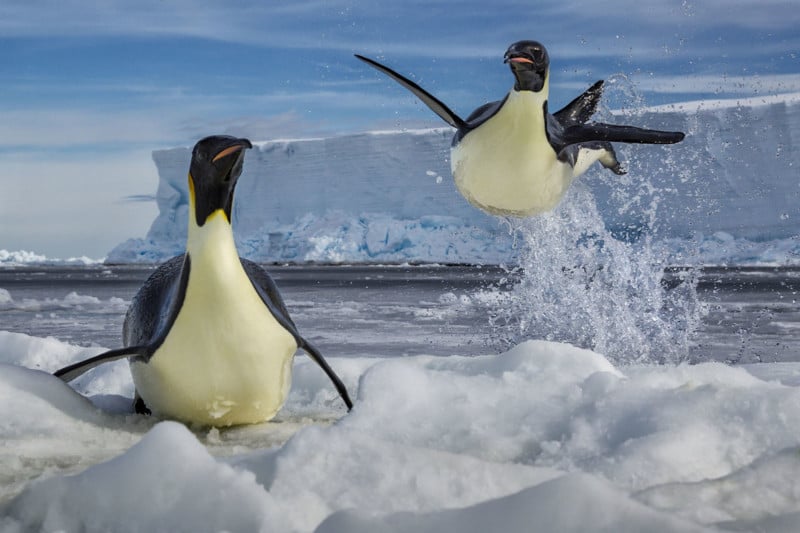
Favorite Photos
“I probably am most proud of Polar Reflections,” says Nicklen. “A polar bear’s image is mirrored against the water surface as it dives below a pan of ice. It’s on Apple TV and Apple computers.
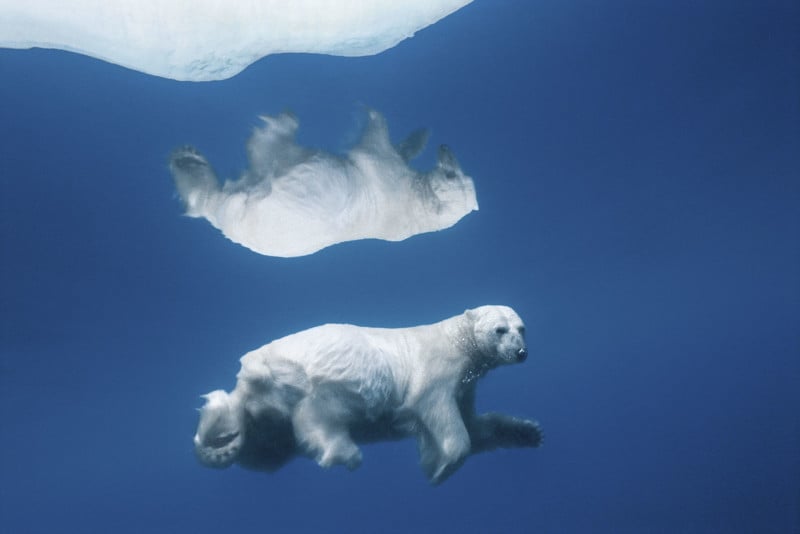
“When I do public lectures, people in the audience will judge me. Cristina was in the audience, and some people said it was fake and Photoshopped because they thought there was no way anybody could capture that.
“I like that photograph, which sits at the intersection of art, science, and conservation. It was shot on 400 ISO film, and I didn’t even know if I had the shot. I got the photo in the mail a month after taking it. All the photos were terrible except for that one picture. A little bit of ice is there in the upper part of the frame, and it talks about climate change and the effects on polar bears who will disappear without the ice.
“Ice Waterfall is my best-selling fine art piece in my five favorite photographs. I love that image. I’ve never put a picture on my wall as I would just start criticizing my work. But that’s the only one I’m going to be putting up in my new office in a couple of weeks.
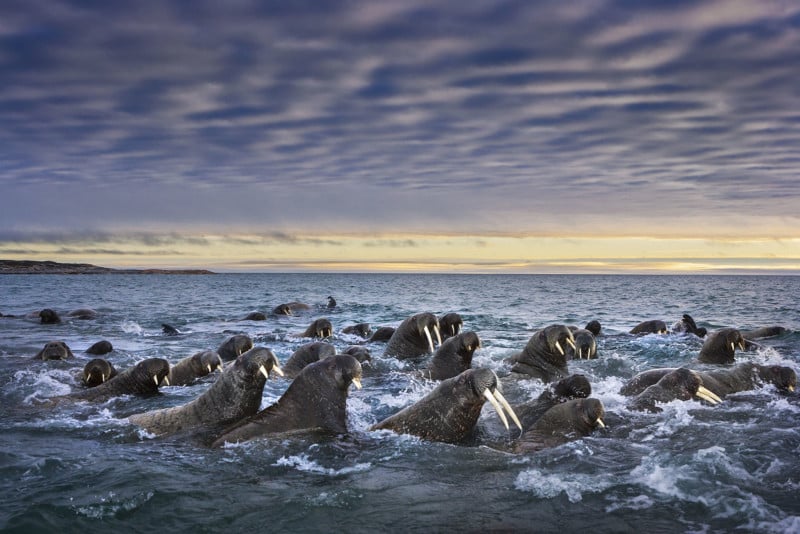
The Power of Video in Conservation
“In the past, I’ve shot hundred percent stills. Four years ago, I started shooting probably a 60/40 split of video versus stills. The Sony a1 with 8K video is a great camera. For a while, I was using RED video cameras. Now I am shooting Sony for stills, and it’s great as I have 8K video and a still camera all in under one underwater housing.
“I don’t have to carry two cameras. I shoot the Sony FX9 for video, and now I will be hitting the Sony Venice II. But they don’t have an outstanding underwater housing yet. Right now, I can use the a1 underwater, have its fantastic camera to shoot 20 frames a second on stills with high-quality 50-megapixel files and then switch over to 8K video. It’s the most exciting time for visual storytelling.
Nicklen says he has not been to as many countries as his wife Cristina, who has been to over a hundred. National Geographic has been flying him mainly to the Arctic or Antarctic, but he has visited about 60 countries.
“I try to fly as little as possible as I don’t want a big carbon footprint. I like to go places for long periods, to get immersed with the animals and the environment,” says Nicklen.
More than competition awards and the honorary PhDs, it’s receiving the Order of Canada he appreciates the most.
“[It means] you have been value-added to this planet, that you’re on a mission, you have a purpose, you’re out there fighting for your conviction and your beliefs… it means the world to me,” says Nicklen.
As a co-founder of the non-profit, SeaLegacy, Nicklen is opening a fresh, progressive chapter in the story of ocean conservation. Through visual storytelling, SeaLegacy inspires millions of people to stand up and have a voice for the pristine places threatened by climate change.
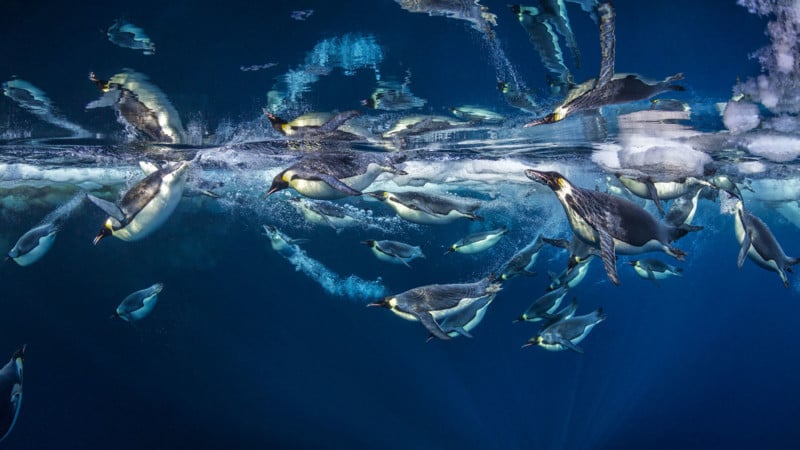
![]()
“It’s really about using the power of visual storytelling to galvanize a global movement, to have conservation wins, and we have had many wins,” says Nicklen.
“I’m incredibly proud of our team, editors, storytellers, and work. I’m incredibly proud to work alongside my wife Cristina [Cristina Mittermeier, who started the International League of Conservation Photographers (ILCP)], who’s one of the great conservation heroes of our planet and to be out there and to see the passion and the conviction she has.”
It saddens Nicklen to see people in the wilderness looking at their phones instead of taking in the beautiful nature around them. He remembers a family, a father, and his kids, sitting on the beach in Hawaii, and they were all glued to their phones when a humpback whale was breaching in front of them.
“I was just laughing to myself thinking, I bet you they’re googling where to find humpback whales,” smiles Nicklen.
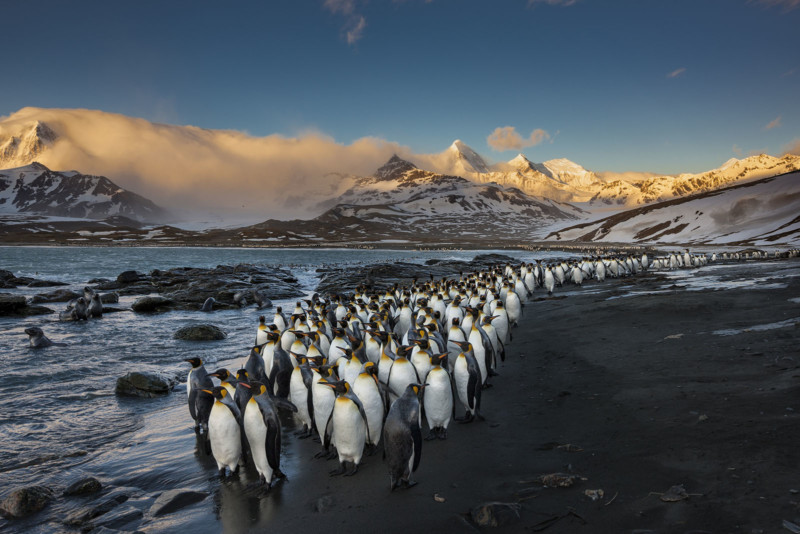
Most of Nicklen’s 7.3 million Instagram followers live in big cities. He has a large following in India, Los Angeles, and New York. It’s a nice mix. He has an incredible diversity of 50/50 men and women, people from all around the world, with most of them living in city centers, and his feed and pictures are an escape.
Growing Up in the Arctic
Nicklen grew up in the Arctic with the Inuit [indigenous people of northern Canada] and became obsessed with wildlife, nature, and extreme environments when he was four. Then, his family moved to Baffin Island [extreme northern Canada opposite Greenland].
“It was very much an immersive experience where we were one of three non-Intuit families in the community,” remembers the environmentalist. “We never had a telephone or television and no computers back then. So, all of my time was spent outside, playing in the ice and snow. [I learned] the Inuit language, survival skills, how to be tough, and how to be immersed in nature.
“The Inuit tell stories through their big, beautiful soapstone carvings and lithograph paintings. They sit down in the evening to tell folklore stories that fire up your imagination. So, while I was learning to be tough, I was learning how to tell stories at a young age. My head was filled with these beautiful creations of mood, light, animals, sea ice, aurora borealis, and dancing polar bears.”
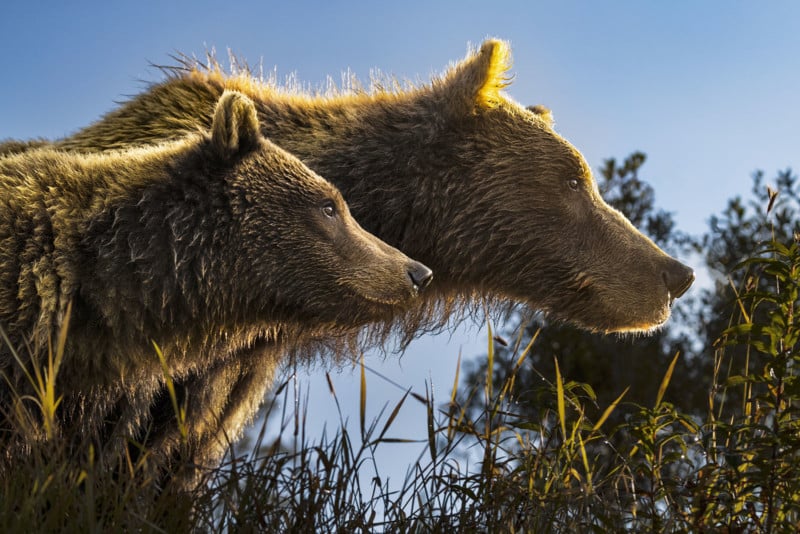
He did not have dogs and cats for pets but local wildlife.
“I had a baby ringed seal that the Inuit would give to us,” he remembers. “And a baby pet seagull named Sammy who had a broken wing, and I would take care of him, and those were my two favorite pets.”
“I fell so in love with the visuals of the Arctic, and the only job that made sense to me was to become a biologist. So, I got my BS in marine biology at the University of Victoria [and they gave him an honorary Ph.D. a few years ago for the impact his photography has had on climate change] and went back north.
I started to feel demoralized that I was reducing the beauty of the animals I love so much into data sets. So, I resigned as a biologist and went off in pursuit of becoming a photographer.”
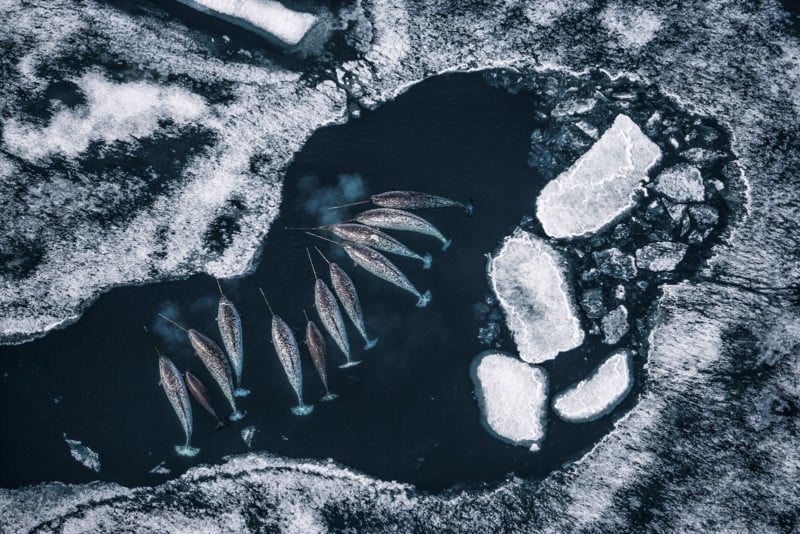
After seven years of starving, being broke, trying to get noticed, doing everything wrong, and making all the mistakes, Nicklen eventually got his first assignment for National Geographic Magazine on salmon in 2003.
Getting Into Photography
“My mom was a schoolteacher when we lived in Baffin Island,” says Nicklen, a Sony Ambassador. “She had a Pentax K1000 and would develop her pictures in a dark room in the little cold storage of our home. I was always so in awe of the craft of photography, but I never believed it would be available to me.
“I never picked up a camera until late when I was 18 or 19, and I didn’t buy my first camera until I was 20 — a Nikon FE, then FE2. And then I bought the Nikon F4 — that was my big purchase. Next, I switched to Canon, and in 2019 moved to Sony.
“I always watched Cristina shoot silently with these Sonys, and then the mirrorless cameras got better and switched.”
![]()
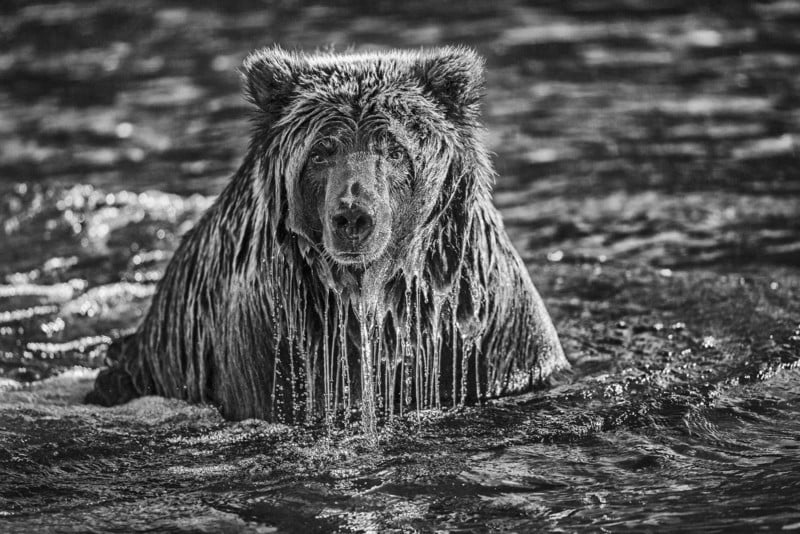
Gear Choices
The move to digital photography made life a little easier for Nicklen.
“Most of my work is underwater, and you’re using flashes and strobes, and the lighting is very complex. I spent a lot of time bracketing in the film days and trying to get close to the correct exposure of a tricky situation, whether you’re under the ice and there are icebergs and penguins or whatever it is.
“Nowadays, instead of having 36 exposures in my camera, I have 3,600 exposures. [It is great] to get all these chances at getting a great shot and to have a Polaroid review of that image on the LCD screen.”
Nicklen’s camera equipment arsenal comprises top-of-the-line Sony mirrorless equipment.
“I have been using five Sony a1 cameras,” he says. “I have received the Sony a7R V, replacing my a7R IV bodies. If I have landscapes or aerials where things are not moving fast, or I don’t need to shoot 8K video, I’ll pick up the a7R V. The a1 is my go-to camera that I have all the time with me.
“I was shooting the a9 for a long time because I loved the fast motor drive for wildlife and nature, but now, I prefer to have it all in one package, which is why I have so many a1 bodies. I have seven Sony lenses: 14mm f/1.8 GM, 16-35mm f/2.8 GM, 24–105mm f/4 G OSS, 20mm f/1.8 G, 100-400mm f/4.5-5.6 GM OSS, 200–600mm f/5.6–6.3 G OSS, and 600mm f/4 GM OSS.”
Nicklen feels that the 400mm f/2.8 is very big, heavy, and expensive for most photographers and is not required as much today with digital as it was with ISO 100 films. It’s nice to have the f/2.8 for shallow depth of field, but often you are trying to get everything in focus and not shooting at f/2.8.
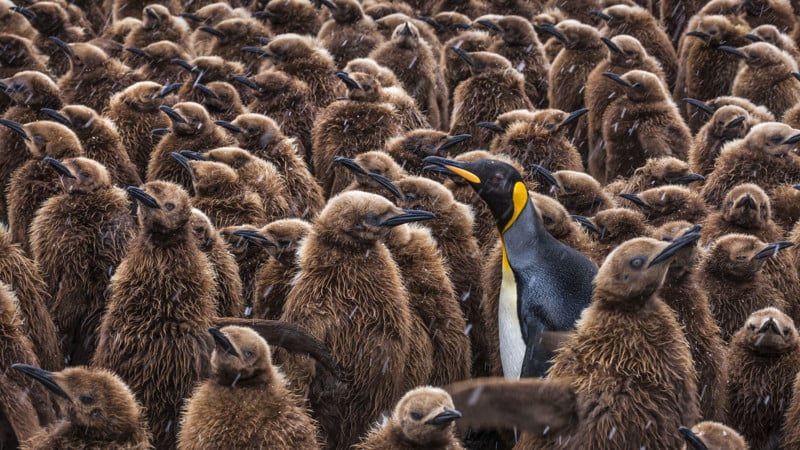
When Canon first came out with that vacuum pump 100-400mm, it was such a marginal lens, it was barely usable, but it was such an incredible focal length. I always had a 70-200mm, and there was always a 1.4x teleconverter on it, which only got me to 280mm. So, I always wanted to shoot that 100-400mm, and I was often very disappointed with the results.
Even the Nikon people did not like their first, what was it, 80-400mm. Finally, Canon came out with their second generation, 100-400mm, and then Sony came out with their 100-400mm, which is tack sharp, and it’s this lens that I use the most often. It’s the lens that I always have on my camera. If I need to go to a 600mm from there, I do, but I’ll always have a 100-400mm on my camera to start with. Next week I am going to Antarctica and will take the 200–600mm F5.6–6.3 G OSS as it is a versatile lens [but he uses the 100-400mm more].
A Mastersclass from the Master
Nicklen has created a course of 50 episodes under Masters of Photography, from animal encounters to composition to psychology.
I never saw myself as a teacher, but I kept getting pressured by the Masters of Photography team in the UK to come and teach this course. I kept thinking maybe I didn’t have enough to say, and then once the camera started to roll, and they began to peel back the layers, I couldn’t talk fast enough.
Photographers have a lot of insecurities, a lot of doubts, a lot of fears, those little voices that tell you you’re not good enough, you’re gonna fail. I want talented, powerful storytelling photographers out there shooting the best images in the world to effect change for our planet. I want to teach people to get out there and believe in themselves. This isn’t really about my favorite f-stop and shutter speed, although we do some of that stuff. You can Google and watch that on YouTube, but I go through the psychology of photography and how to push yourself to the highest level in photography. I talk about the left brain and right brain. We do goal setting; we deal with how to break down doubt. We get into composition and shutter speeds and how to be nice, gentle, and respectful to the animals. It’s a course for photographers who want to be near animals, take pictures of them, and get into National Geographic.
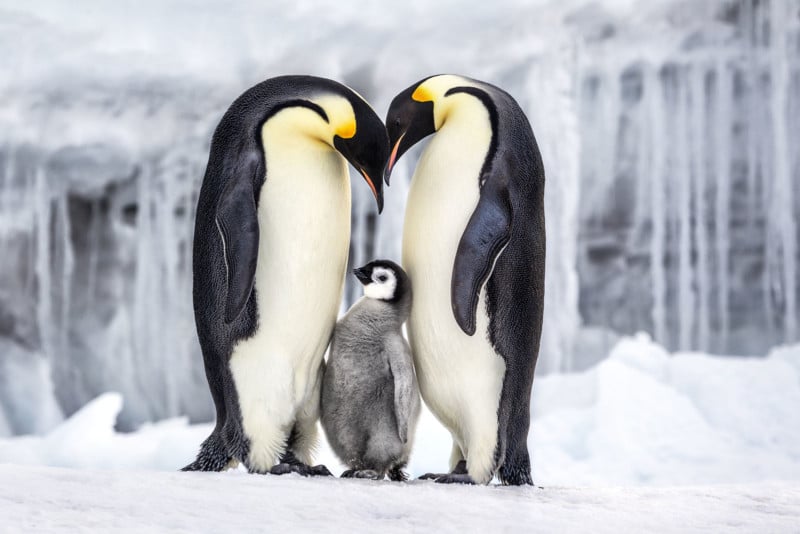
Nicklen has a conservationist message in his photography.
“I do not ever want to take ID photos of animals. I want people to have an emotional connection, the same way the Crocodile Hunter made people have a connection to animals. I like the world to fall in love with leopard seals, polar bears, narwhals, whatever animal it is.
“To do that, I have to spend an incredible amount of time with these animals. I must make that emotional connection. I have to have animals stare into my lens and connect and have the viewer of that image have an emotional response. I want people to fall in love with animals, care about the ecosystems where these animals are from, and ultimately be better stewards of this planet.”
You can see more of Paul Nicklen’s work on his website and Instagram or join his Masterclass.
About the author: Phil Mistry is a photographer and teacher based in Atlanta, GA. He started one of the first digital camera classes in New York City at The International Center of Photography in the 90s. He was the director and teacher for Sony/Popular Photography magazine’s Digital Days Workshops. You can reach him here.
Image credits: All photos courtesy of Paul Nicklen.